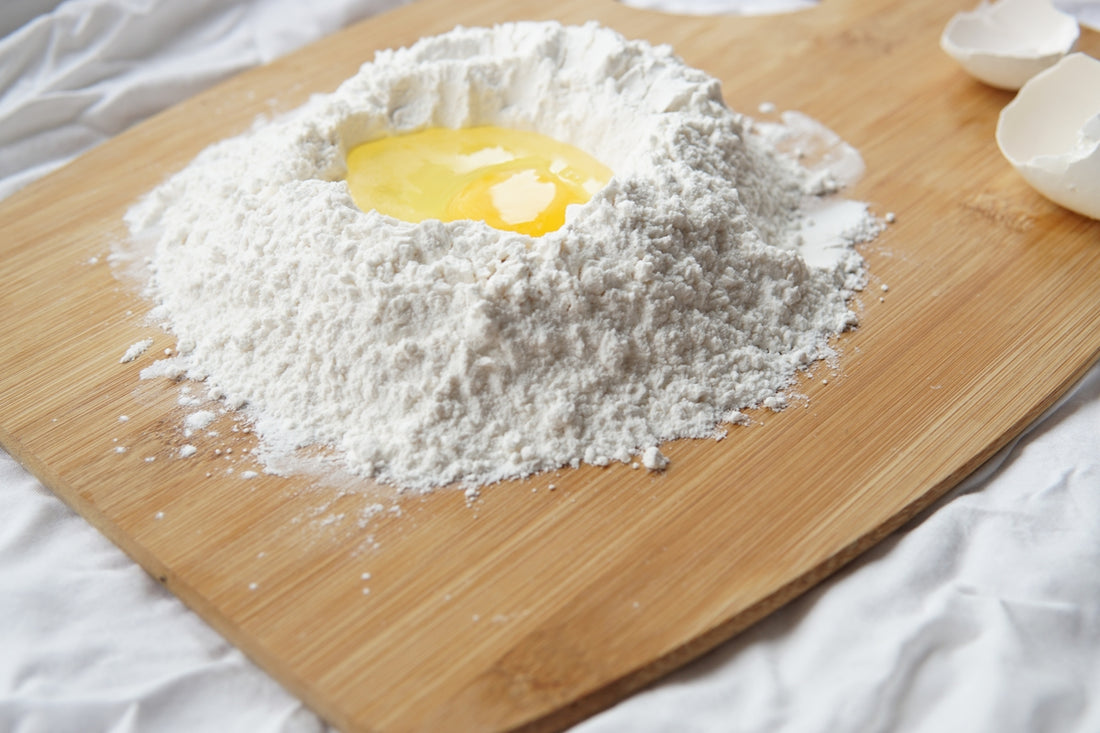
Mastering the Basics: How to Get Started with Your First Sourdough Starter
Embarking on a journey into the world of homemade sourdough bread is both exciting and rewarding. Whether you're drawn to the magic of sourdough fermentation or the allure of creating artisan bread, getting started can sometimes feel overwhelming. This blog post will guide you through the essentials of creating and maintaining your very own sourdough starter, offering sourdough baking tips, comparing sourdough starter vs yeast, and exploring the benefits of sourdough fermentation.
The Art and Science of Sourdough
At its core, sourdough is all about harnessing wild yeast fermentation. Unlike commercial yeast, a sourdough starter is a live culture of flour and water that captures wild yeast and bacteria from your environment. This culture not only helps your bread rise but also imparts the distinct flavor and texture that sourdough is famous for.
Why Choose Sourdough Over Regular Bread?
Sourdough bread has gained popularity not only for its tangy flavor and hearty crust but also for its health benefits. The fermentation process breaks down gluten, making it easier to digest, and it lowers the bread's glycemic index. This is one reason why sourdough is a great option for diabetics.
Starting Your Sourdough Life
Getting started with sourdough involves creating a starter from scratch or using an organic sourdough starter like Nonna Bella Dehydrated Sourdough Starter – 10g Tuscan Heritage Culture Since the 1800s. A starter with a long legacy, such as Nonna Bella's, can enrich your baking with time-honored flavors.
How to Create and Maintain a Sourdough Starter
Creating a sourdough starter is simple but requires patience and attention. Here’s how you can start:
Ingredients:
- Whole wheat flour or all-purpose flour
- Filtered water
Instructions:
- Day 1: In a clean glass jar, combine 50g of flour with 50g of water and stir until smooth. Cover the jar loosely with a lid or cloth to allow airflow.
- Days 2-7: Discard half of the starter each day and feed it with 50g of flour and 50g of water. By Day 5 or 6, your starter should be bubbly and have a pleasant sour aroma.
For those interested in more than just starting a sourdough culture, explore how to bake sourdough bread by keeping a consistent sourdough starter feeding schedule. Regular feedings build strength and flavor. Here's an example schedule:
- Twice a Day Consistency: Feed the starter every 12 hours for a consistently active culture.
- Fridge Storage: If baking less frequently, store your starter in the fridge and feed once a week.
Sourdough Starter Troubleshooting
If your starter isn’t rising, it may be too cold or need more regular feedings. Learn how to feed sourdough starter effectively and keep it active. Check your flour-to-water ratio, as consistency is key.
The Tools of the Trade
To shape and bake your dough, the right tools can make a significant difference. Sourdough artisans often recommend investing in:
- Wooden Handle Bread With 5 Blades Lame Dough Scoring Slashing For Sourdough Bread Bakers Dough Scoring Knife for impeccable sourdough scoring techniques.
- Non Stick Silicone Baking Mat Food Grade Pan for Pastry to ensure your bread bakes evenly without sticking.
- Reusable Silicone Bread Sling for Dutch Oven Baking Mat to easily transfer your dough.
Baking Your First Loaf
Once your starter is ripe and bubbly, it’s time to dive into the world of easy sourdough bread. A basic sourdough bread recipe will include:
- Ingredients:
- Active sourdough starter
- Bread flour
- Water
- Salt
- Steps to Bake:
- Combine all ingredients and let rest (autolyse) for 30 minutes.
- Knead the dough until smooth, then allow it to rise.
- Shape the dough – learn how to shape sourdough bread correctly for an even crumb.
- Score the top for maximum oven spring using recommended scoring blades.
- Bake in a preheated oven with steam to get a crispy sourdough crust.
Sourdough Bread Troubleshooting
Every sourdough baker encounters issues such as dense loaves or inadequate rise. The key is experimentation and patience. Variations in temperature, humidity, and flour can impact your results.
Beyond Bread: Sourdough in Culinary Adventures
Your sourdough journey doesn’t end with bread. Dive into sourdough discard recipes, such as pancakes or biscuits. Try making sourdough pizza dough with Nonna’s Pizza Dough Docker – Pastry Roller for Sourdough Pizza, or even delve into creating sourdough bagels.
Conclusion
Whether you are nurturing your first starter or shaping your 100th loaf, sourdough baking is as much an adventure as it is a practice in patience. Remember, sourdough starters evolve, shaped by your local environment, your hands, and the ingredients you use. Join the community of bakers who thrive in the world of sourdough, and enjoy the satisfaction of making your own bread at home.
For more insights and tools, visit Italian Sourdough and continue your journey into the world of sourdough fermented delights.
